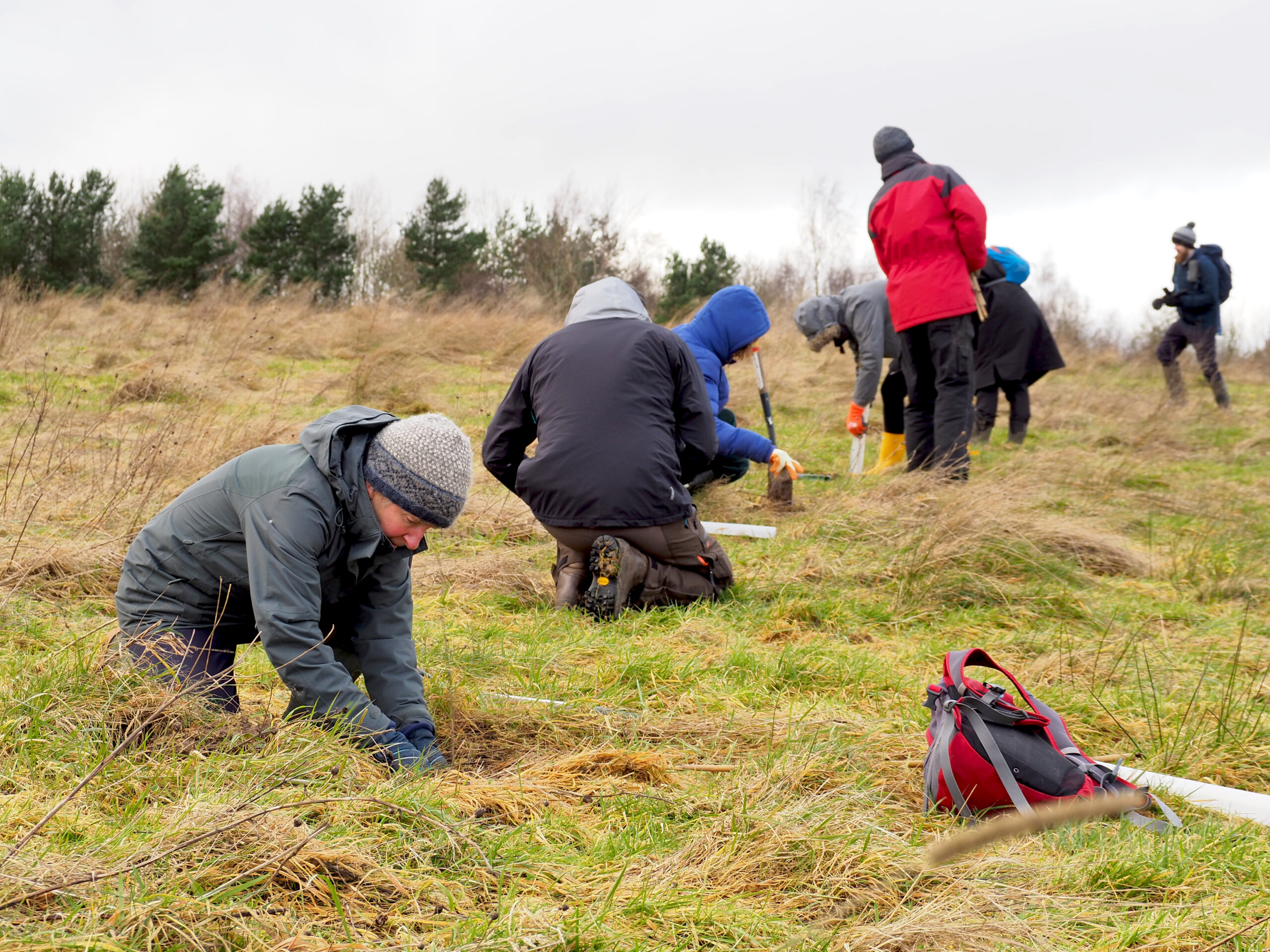Volunteers are the lifeblood behind many great projects, and you’ll be surprised at how many people are excited to give their time up to help bring a project for nature to life. Here we’ll delve into volunteering, what it means, how to recruit people, and how to ensure volunteering is an all-round positive experience.
What are volunteers?
Let’s start with the essentials. Volunteers are people who help with something that benefits people or places without being paid. It could be arranged by an organisation, or it could be casual within the local community.
Volunteers can help with many different things. Some examples of nature-based activities volunteers could help with are:
- helping with practical work like removing invasive plants or digging a pond
- helping to maintain and protect local parks, nature reserves, community centres and other buildings
- raising funds or awareness for a cause or project
- supporting public events, for example, with setting up, tidying or talking to visitors
Volunteers can be any age and from any background. They may be full-time workers, retirees, students or individuals seeking new skills. Some companies give their staff volunteering days which means people can use their working hours to volunteer.
It’s important to remember that the amount of time volunteers give should always be their choice and the activities they are asked to do should be different from those given to paid staff.
Why do people volunteer?
There are countless reasons why people volunteer, and these will be different for everyone. Some of the most well-known benefits of volunteering are:
- meeting new people and building friendships and connections
- learning new skills – this could be to help them get into work, start a new career, or a way to boost their confidence and mental wellbeing
- helping the local community and local nature
- using their skills for a good cause
- doing something proactive in their free time

Recruiting volunteers
Working with volunteers is a great way to engage the local community in your project. Local people will likely already know the local area, possibly in a different way to you, and be invested in improving it.
When it comes to recruiting volunteers, there are a few things that can make a big difference.
How will people apply?: Try to make this process as simple as possible. Are you going to create an application form or will interested people send an email to you with their details?
How and where are you going to advertise?: Advertising in local shops or newspapers can be a great way to engage with communities. Simple, handmade posters or posts in your local community social media group can be just as impactful as professionally designed adverts. Social media is a powerful tool for connecting with people.
Have a clear message: Explain your overall goal. People are more likely to offer help if they understand the wider impact your project will have and what the end goal is. Make people aware of the benefits of your project and the good it will do.
Have a clear role: Make sure it’s clear what activities and roles you’re asking people to fill so they know what they’re signing up for. You may not be able to predict everything that’s needed, especially in the early stages of a project, but make sure the main tasks are clear.
How much help will you need? This will impact how much recruitment you need to do. If you need a lot of help you will either need a lot of volunteers or a few people volunteering a lot of their time. If you need people to volunteer a specific amount of time, make sure this is clear from the get-go.
Make it easy for people to get in touch. Make this as simple as possible and more people are likely to apply. Lengthy or unclear applications without a clear contact will put people off. Provide a contact email address or phone number for further information. Alternatively, if you have a website, include a contact form.
Working with volunteers
You’ve recruited your volunteers and you’re ready to go! When you’re running your first activity with your volunteers, there are a few things to consider.
Be organised: Volunteers are giving up their time to help, so it’s important to have a clear goal for your first activity and to plan the time you have with them efficiently. It can be useful to help people plan their day. If your activity is going to be a full day, then give people an idea of what time things like lunch are happening.
Be honest: If this is your first-time managing volunteers don’t worry about getting everything right. The important thing is to be honest and open with your volunteers about any issues that come up. The most important thing is that everyone is safe during their time volunteering.
Remember that everyone is different: Different people have different preferences and motivations for volunteering. Abilities and skills vary, so tasks that may be easy for some may take longer for others. Keep an open mind and be kind and patient.
Say thank you: It’s important to thank your volunteers for their time and effort. They are giving this up for free to help you and its important you let them know how appreciated and wonderful that is.

Useful links
The National Council for Voluntary Organisations (NCVO) has a huge range of information and support for working with volunteers. They offer a wide range of guides and articles on a variety of topics, including legislation, insurance and training.
Here is some helpful guidance to consider when planning your project and volunteer involvement:
- writing a volunteer strategy
- ways to thank you volunteers
- working with volunteers who claim benefits
- insurance for working with volunteers
If you want to learn more about working with volunteers and other aspects of community organising to promote positive action for nature, you can now join our free online Pioneers Programme course. Find out more about the programme and register here.
